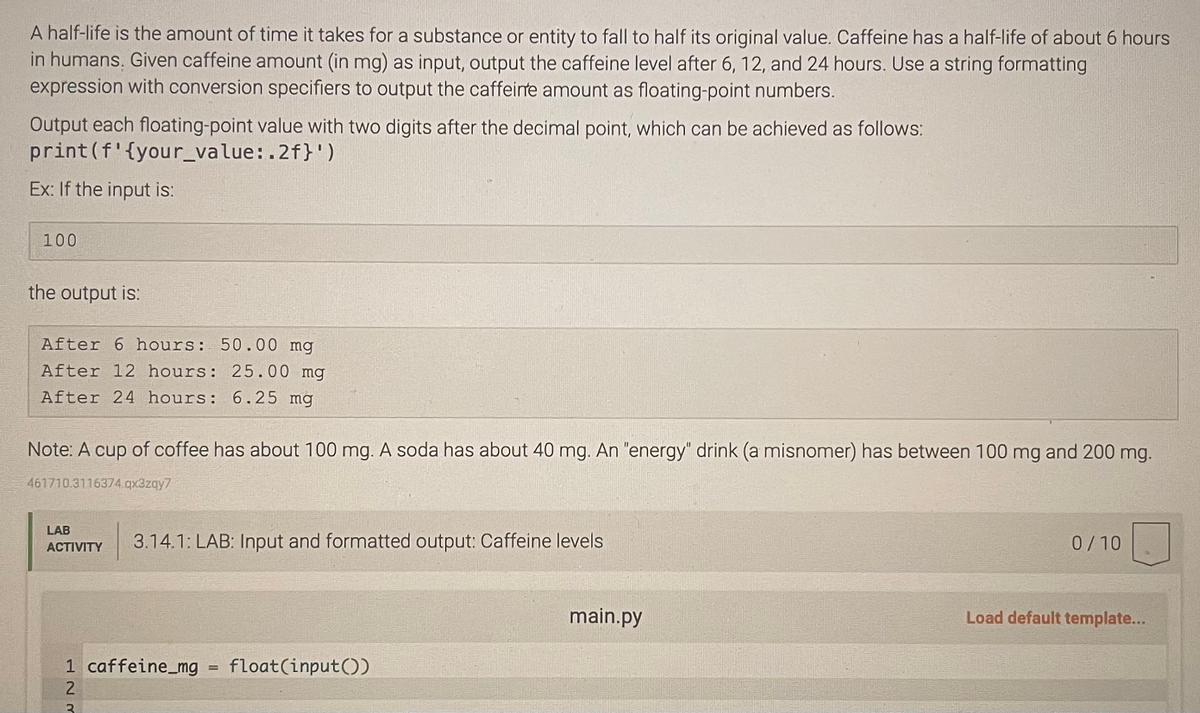A half-life is the amount of time it takes for a substance or entity to fall to half its original value. Caffeine has a half-life of about 6 hours in humans. Given caffeine amount (in mg) as input, output the caffeine level after 6, 12, and 24 hours. Use a string formatting expression with conversion specifiers to output the caffeirte amount as floating-point numbers. Output each floating-point value with two digits after the decimal point, which can be achieved as follows: print (f'{your_value:.2f}') Ex: If the input is: 100 the output is: After 6 hours: 50.00 mg After 12 hours: 25.00 mg After 24 hours: 6.25 mg Note: A cup of coffee has about 100 mg. A soda has about 40 mg. An "energy" drink (a misnomer) has between 100 mg and 200 mg.
Control structures
Control structures are block of statements that analyze the value of variables and determine the flow of execution based on those values. When a program is running, the CPU executes the code line by line. After sometime, the program reaches the point where it has to make a decision on whether it has to go to another part of the code or repeat execution of certain part of the code. These results affect the flow of the program's code and these are called control structures.
Switch Statement
The switch statement is a key feature that is used by the programmers a lot in the world of programming and coding, as well as in information technology in general. The switch statement is a selection control mechanism that allows the variable value to change the order of the individual statements in the software execution via search.

Trending now
This is a popular solution!
Step by step
Solved in 3 steps with 1 images






